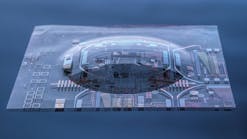Rapidly Advancing Flash is a Double-Edged Sword for Embedded IoT (.PDF Download)
At first glance, using an external flash device with a microcontroller (MCU) appears to be a simple exercise in matching the two devices to achieve functionality. But designing an embedded product is a complex process of finding the best balance between competing solutions to meet the design requirements.
Introducing flash to the design, as most Internet of Things (IoT) devices do, adds another set of variables to arbitrate—and can make it more difficult to meet the application’s efficiency, longevity and reliability requirements. This article discusses the most common flash technologies incorporated in embedded systems and the challenges that emerge in order to reliably use them.
Types of Flash for Embedded Applications
Flash can be either removable or non-removable. Removable media include USB pen-drives, compact flash, SD/SDHC/XDHX/MMC cards, and other similar packaged technologies. Non-removable media include NAND, NOR, and eMMC. Figure 1 shows eMMC-packaged NAND flash.








